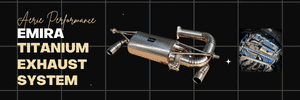4.2s is the manual version. Motortrend got 3.4s on PDKS. The official numbers for the PDKS are 3.7s
PDKS is a machine. PDK in the GTS 4.0 is a slightly different story.
No doubt. PDK is crazy fast as well as VW's dual clutch DSG. I have my MK7 DSG tuned by Unitronic... instant up/down shifts, higher clamping force, optimized drive/sort modes, and launch control. It's very fast on the track and daily driveability is greatly optimized over stock as well. This was my first experience tuning a "TCU" and it was well worth the $600 with my Stage 1+ ECU tune. They compliment each other well. Lightning fast responsivness on the track and still getting 36+MPG daily driving! APR also has a good breakdown of how they can tune the dual clutch trans.
It'll be exciting to see what comes out for the Emira, but from what I'm told Lotus locks down their ECUs (and probably TCUs) pretty well. You'll also be voiding the powertrain warranty when reflashing either.
All that to say, I don't really care which is faster. I enjoy my DSG GTI, but my Emira is going to be full driver engagement with the manual transmission and that's what I'm after. I'm still excited to see what those opting for the AMG i4 are able to squeeze out with a proper tune. A 500HP Emira is what we should have been offered from the factory!!!








